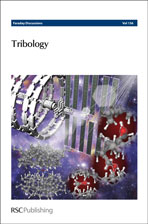Predictive modelling of fatigue failure in concentrated lubricated contacts
Abstract
Reducing frictional losses in response to the energy agenda will require use of less viscous lubricants causing hydrodynamically-lubricated bearings to operate with thinner films leading to “mixed lubrication” conditions in which a degree of direct interaction occurs between surfaces protected only by boundary tribofilms. The paper considers the consequences of thinner films and mixed lubrication for concentrated contacts such as those occurring between the teeth of power transmission gears and in rolling element bearings. Surface fatigue in gears remains a serious problem in demanding applications, and its solution will become more pressing with the tendency towards thinner oils. The particular form of failure examined here is micropitting, which is identified as a fatigue phenomenon occurring at the scale of the surface roughness asperities. It has emerged recently as a systemic difficulty in the operation of large scale wind turbines where it occurs in both power transmission gears and their support bearings. Predictive physical modelling of these contacts requires a transient mixed lubrication analysis for conditions in which the predicted lubricant film thickness is of the same order or significantly less than the height of surface roughness features. Numerical solvers have therefore been developed which are able to deal with situations in which transient solid contacts occur between surface asperity features under realistic engineering conditions. Results of the analysis, which reveal the detailed time-varying behaviour of pressure and film clearance, have been used to predict fatigue and damage accumulation at the scale of surface asperity features with the aim of improving understanding of the micropitting phenomenon. The possible consequences on fatigue of residual stress fields resulting from plastic deformation of surface asperities is also considered.
- This article is part of the themed collection: Tribology

 Please wait while we load your content...
Please wait while we load your content...